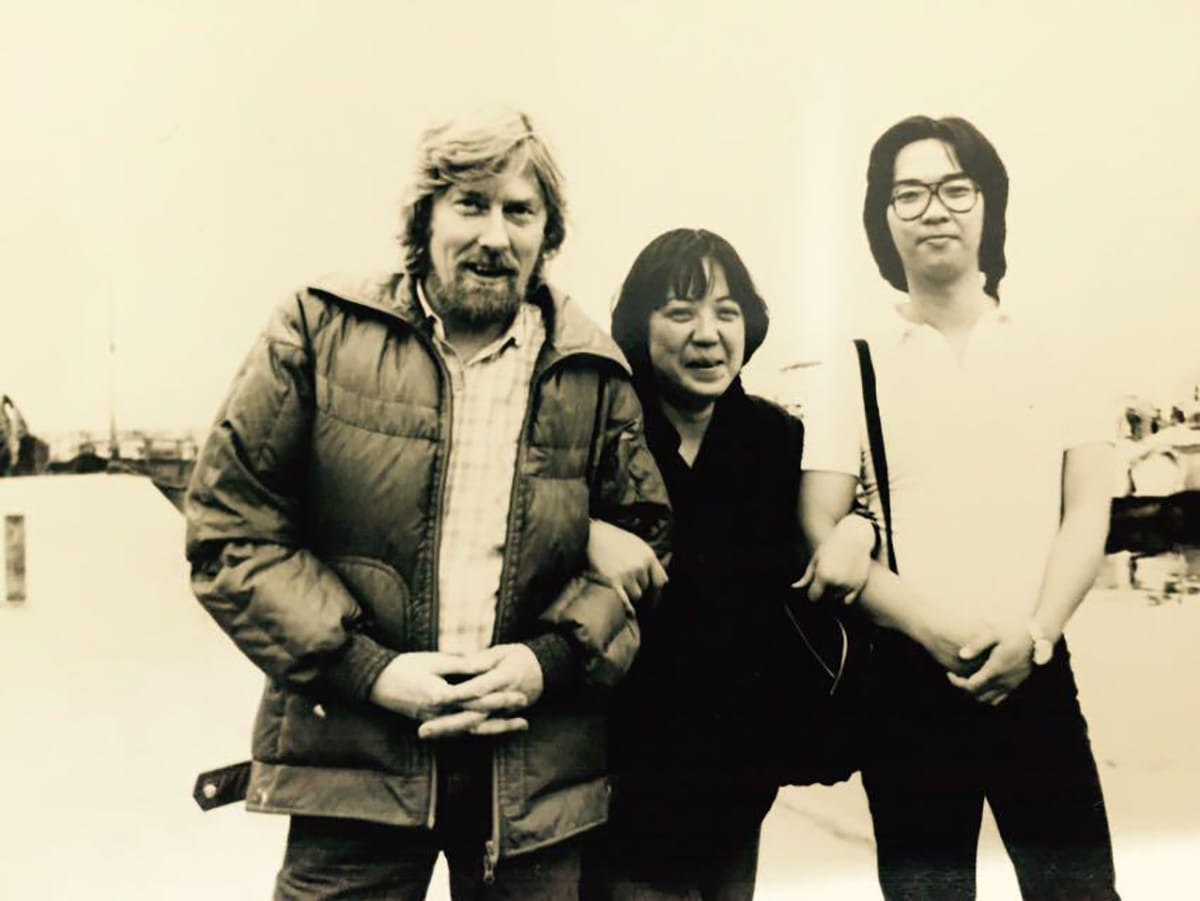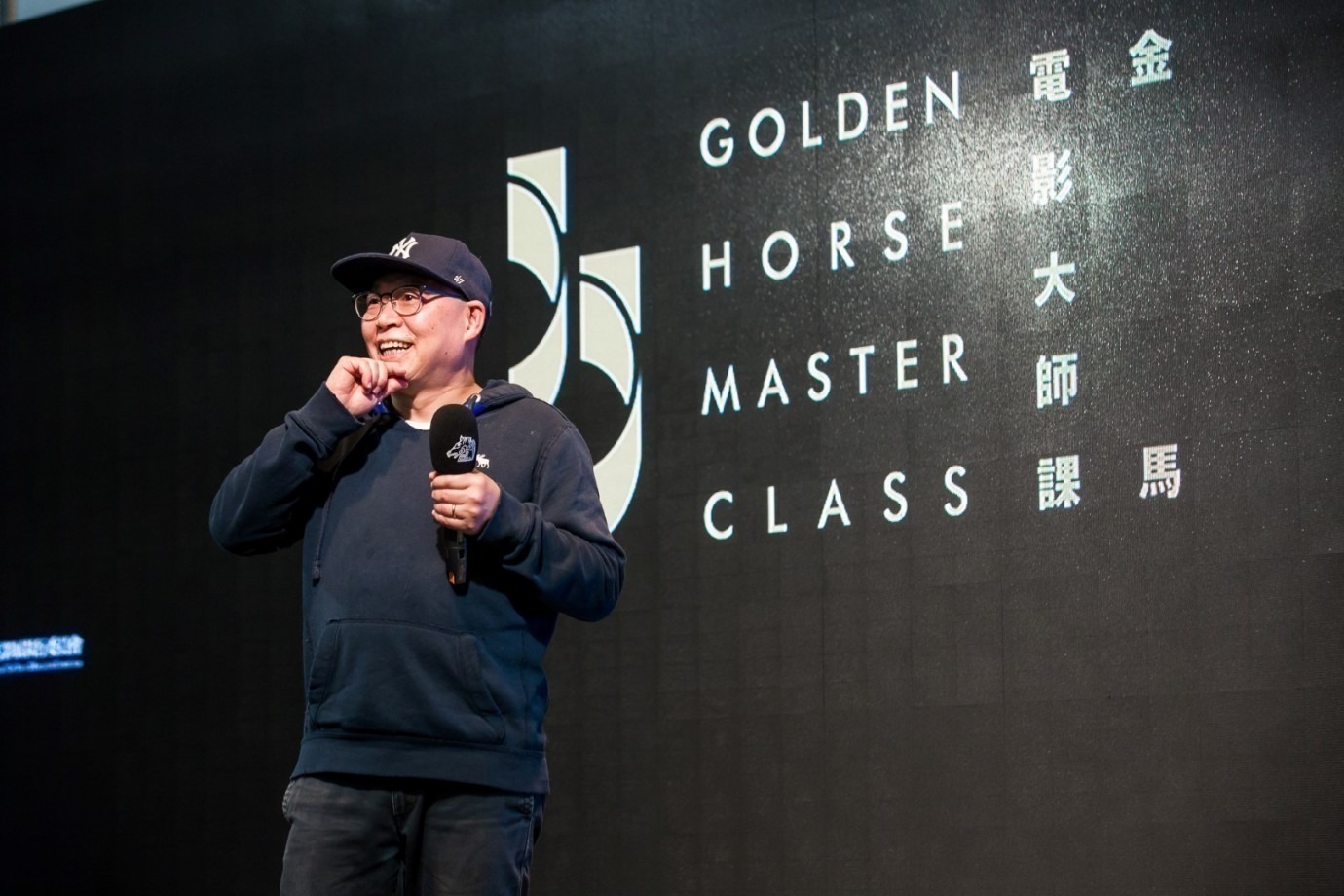
1.
Though he grew up next to a movie theater and often went to see films with his father, Stanley Kwan didn’t dream of a career in cinema when he was a young child; up until middle school, he was focused on studying science. Things changed after he participated in an extracurricular play put on by a schoolmate named Wong Jing, who was a few grades above him and would go on to become a major director in the 1980s. From there, Kwan enrolled in an artist training course established in 1971 by the television network TVB in partnership with Shaw Brothers Pictures, a pillar of Hong Kong studio filmmaking. This formidable program was responsible for grooming and launching the careers of an array of multitalented Hong Kong icons like Stephen Chow, Tony Leung Chiu Wai, Andy Lau, and Johnnie To.

2.
Kwan initially trained as an actor, but he quickly discovered that his passion lay in production. Within the stratified studio system of the Hong Kong film industry, he transitioned quickly into the roles of script supervisor and assistant director, working with Hong Kong New Wave titans such as Patrick Tam (Nomad, 1982) and Ann Hui (Boat People, 1982). He soon became one of the most trusted and sought-after collaborators among important directors of Hong Kong cinema’s golden era.

3.
Having witnessed Kwan’s rise in the studio system, actor turned producer Vicky Leung Lee Siu-ha convinced him to begin his career as a director. Like him, she had been involved in Ronny Yu’s The Savior (1980) and Ann Hui’s The Story of Woo Viet (1981). She ended up collaborating with Kwan on his first feature, Women (1985), and his sophomore feature, Love Unto Waste (1986). By then, many of the actors he had built relationships with as an assistant director, such as Chow Yun-fat, Cherie Chung, and Cora Miao, happily participated in his feature films to support his blossoming directing career.

4.
Kwan’s third feature film, Rouge, was produced by Jackie Chan. At the time, Chan had an acting and producing contract with Golden Harvest, a company that surpassed Shaw Brothers to become Hong Kong’s most productive and commercially successful studio in the 1980s. The project came to Kwan after the director initially attached to it, Terry Tong, dropped out because the development process was taking too long.

5.
Kwan found the film’s art director when he ran into Piu Yeuk-muk at a café frequented by many in the film industry. Piu and Kwan had worked together five years before, when Piu was a still photographer on the set of Boat People. A history and archeology enthusiast, he pitched himself for the art-director job, and despite his lack of experience, Kwan trusted him enough to give it to him. Piu was inspired by the printed flower paper that girls used to wrap their books in the past. This ornate covering became a leitmotif for all the period sets and other visual elements—including the courtesan ghost Fleur’s lipstick paper, the patterns of the cheongsams, and the kaleidoscopic floral wallpaper that embellish the cloistered interiors—giving the film its distinctive stylistic flourishes.

6.
Another key collaborator in the early stages of Rouge was the prolific screenwriter Chiu Kang-Chien, who had worked on Women and Love Unto Waste, and went on to write Kwan’s Center Stage (1992). Chiu transformed the character of Fleur from a forlorn ghostly apparition, as she was portrayed in Lillian Lee Pik-wah’s source novel and in Tong’s earlier version of the script, into a flesh-and-blood presence, a woman who could be walking casually on a crowded street or riding the bus. With this change, Chiu and Kwan began to subvert elements of the ghost-film genre that had become de rigueur in Hong Kong filmmaking. This was a turning point that elevated the film from a cut-and-dry genre piece, per the studio’s expectations, to an audacious art-house experiment. In his script, Chiu even conceived the memorable, dizzying tracking movement that circles around the to-be lovers during the opening scene. He was also an early advocate for the casting of Anita Mui in the role of Fleur.

7.
Anita Mui, who was at the height of her fame in the late 1980s, was known for her chameleonic image. She was dubbed by turns “the Madonna of the East” and “the Dietrich of the East” because of her flamboyant high fashion, androgynous style, and almost absurd dedication to glamour, all of which were evident in her singing and stage performances. But up to that point in her acting career, she had only been offered roles in bubblegum comedies. Smartly, Chiu and Kwan mined Mui’s pop-cultural persona for their development of Fleur, fusing the character’s traits with Mui’s own idiosyncratic star quality. This happens in the first scene, when she anachronistically dresses in male drag to sing the Cantonese opera The Sorrows of the Autumn Traveler. The film’s dialogue also makes reference to Mui’s persona, most explicitly during the opiate-tinged pillow talk scene, when Twelfth Master tells her that she has “many different looks . . . heavy makeup, light makeup, masculine makeup, no makeup . . . like a dreamy moon.”

8.
Many actors were considered for the role of Twelfth Master, and the producers came close to casting Lawrence Ng or Ekin Chen, both rising stars who had also graduated from the TVB artist training program and were known for playing parts in period dramas. But Mui insisted that Fleur’s ill-fated lover had to be played by her good friend Leslie Cheung, who, like her, was enjoying a thriving, glamorous career as a triple-threat performer in the 1980s. He had a preternatural talent for singing and dancing, and had established himself as a mainstay of the Hong Kong New Wave with his breakout role in Nomad, on which Kwan had been assistant director. The trouble was that Cheung was locked into a contract with Cinema City and couldn’t work for another studio. In the end, in a move she jokingly referred to as the “hostage exchange,” Anita had to agree to do a film for Cinema City in order to broker Cheung being loaned out for Rouge.

9.
Fleur’s melancholic perambulations around 1980s Hong Kong with her modern-day hosts, Yuan Ting and Chu, offer them—and by extension us—a lesson in the history of the city. In these scenes one of the film’s most important subtexts emerges: in the years following the signing of the 1984 Sino-British Declaration Treaty, which set the conditions for Hong Kong’s handover to Mainland China after a period of British colonial rule, Kwan used the uncanny to make audiences aware of the preciousness of the disappeared past. The locations in the film really existed. The Yi Hung Brothel in Shek Tong Tsui, where Fleur tries to commit double suicide with Twelfth Master, is now home to one of Hong Kong’s tallest overpasses and an open-air theater, and (appropriately) is also the site of an annual three-day-long Ghost Festival. From 1900 to 1960, the Kam Ling restaurant, where the lovers first meet, was a place where Hong Kong’s cultured elites dined and enjoyed live entertainment; it has since been replaced by a residential high-rise. The Tai Ping Theater, one of Hong Kong’s biggest and most opulent venues, is the site where Twelfth Master gifts Fleur a rouge necklace; in the 1980s it became a 7-Eleven, and it now stands as a dilapidated commercial building.

10.
Rouge contains undercurrents of gender-bending and explorations of queerness, which are manifested through its androgynous stars and its groundbreaking opening scene featuring a cross-dressing opera performance. Kwan would return to these themes more explicitly in his nonfiction film Yang ± Yin: Gender in Chinese Cinema (1997) and his celebrated landmark queer melodrama Lan Yu (2001).

More: Production Notes

10 Things I Learned: Raging Bull
While working on our edition of Martin Scorsese’s 1980 masterpiece, producer Abbey Lustgarten found out how the director achieved some of the movie’s most evocative visual and sonic effects.

The Evolution of a “Superpig”: Designing Okja, from Start to Finish
Both intimidatingly massive and deeply sympathetic, the creature at the heart of Bong Joon Ho’s meat-industry fable is the product of a close collaboration between the director and artist Jang Hee Chul.

A Movie About Leaving Earth
On Earth Day, we celebrate Al Reinert’s For All Mankind, a groundbreaking documentary that is as much a reflection on our planet as it is a chronicle of space travel.

10 Things I Learned: The Celebration
The producer of our edition of Thomas Vinterberg’s breakthrough film explains how the movie reflects the values of Dogme 95, the movement from which it emerged.
